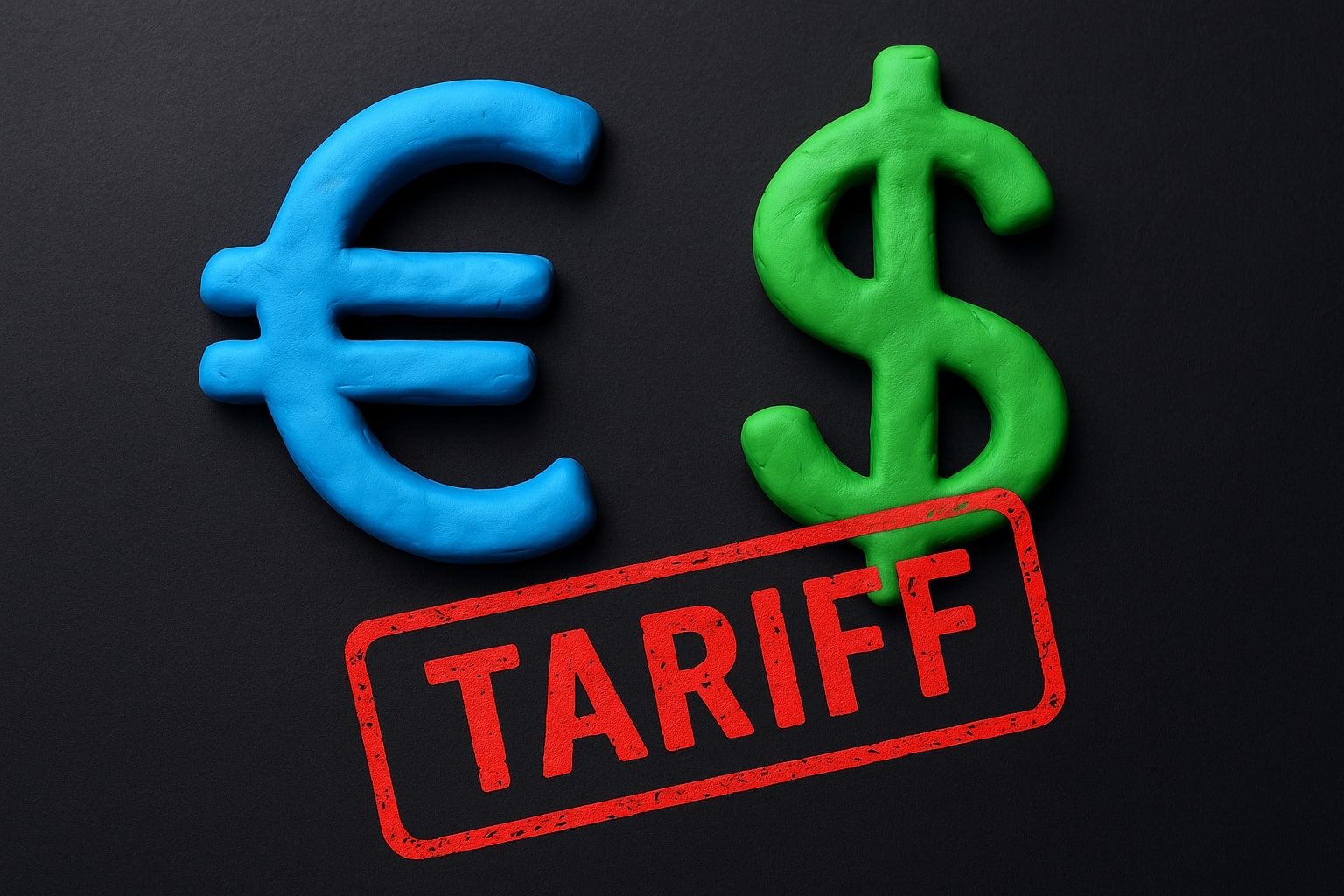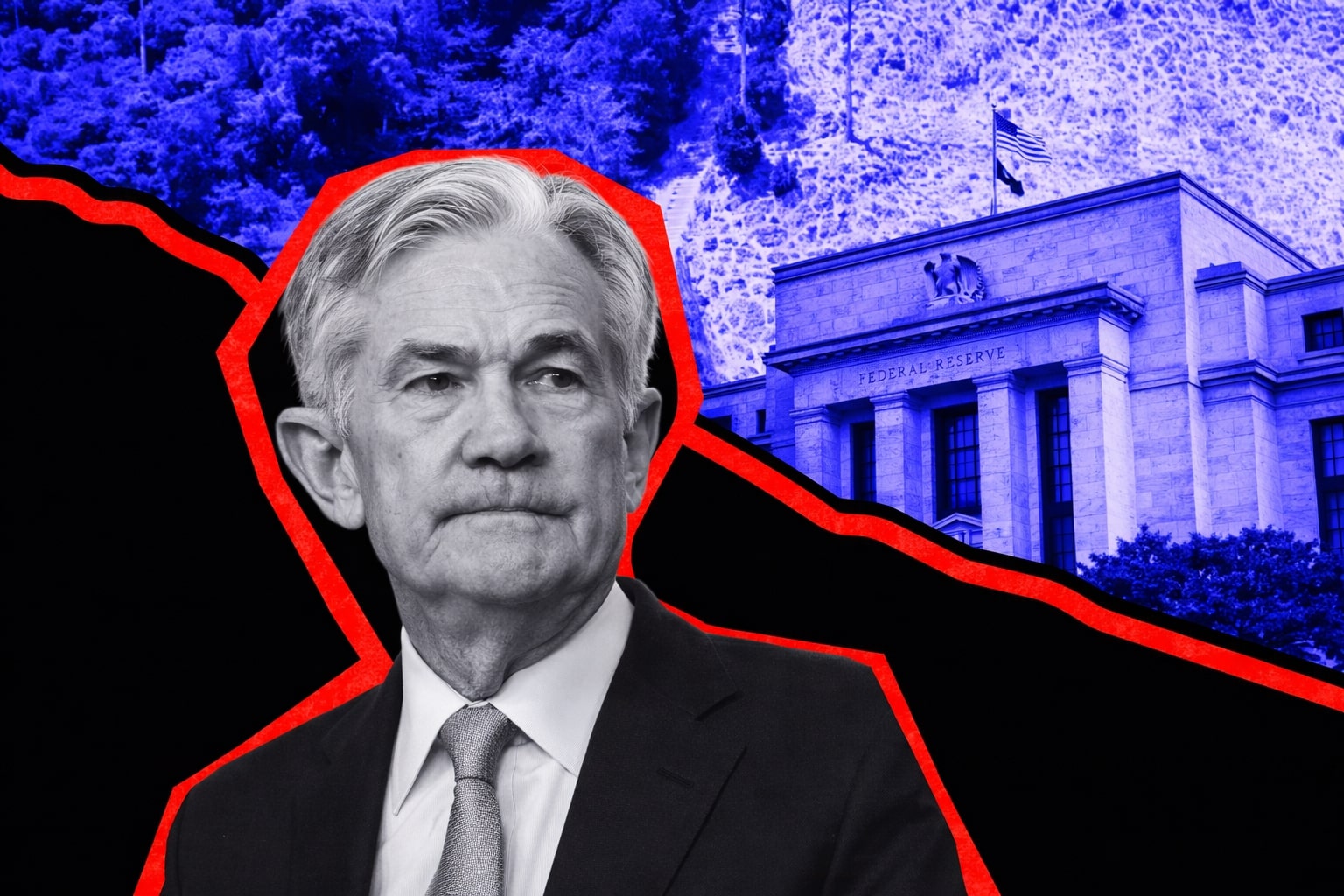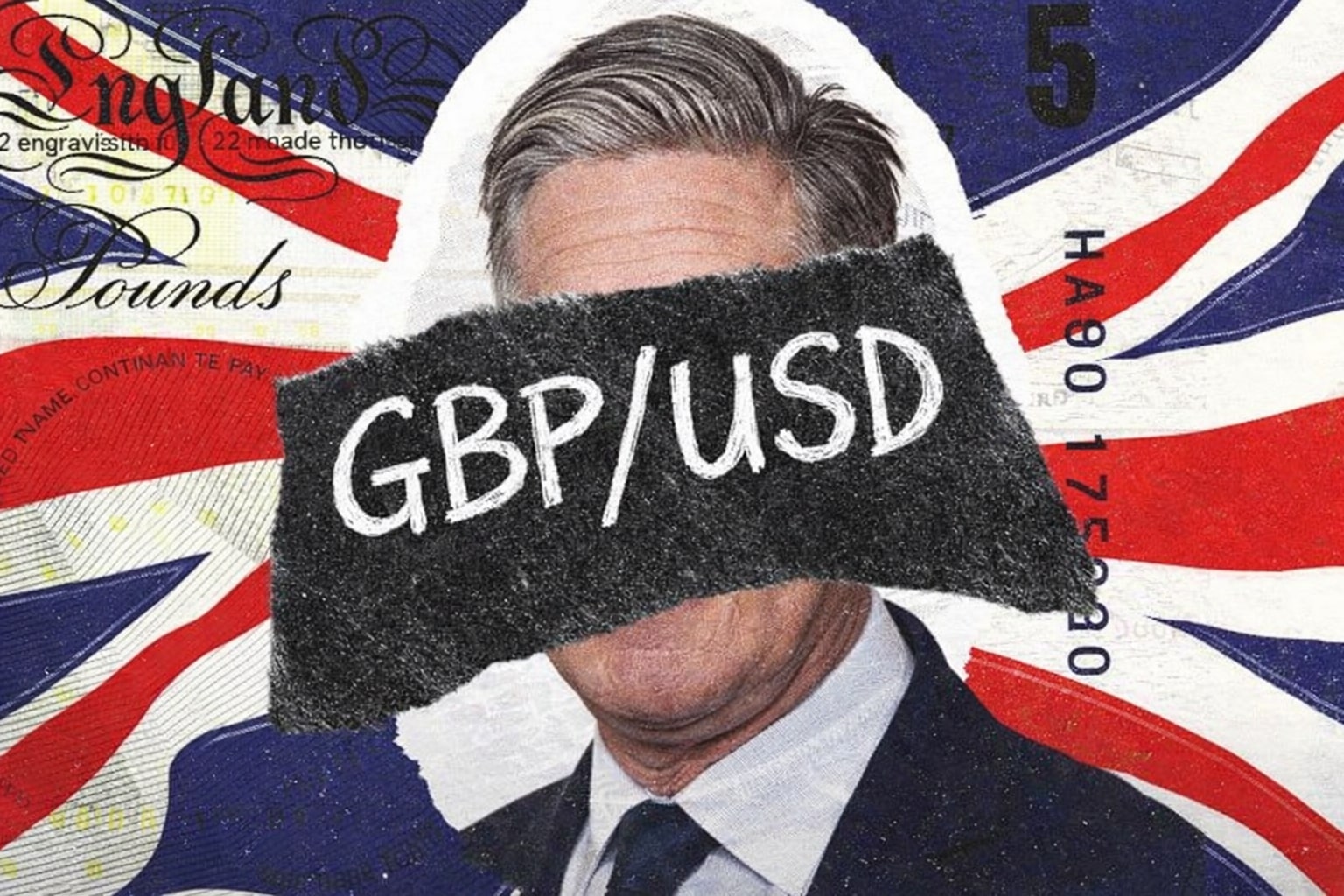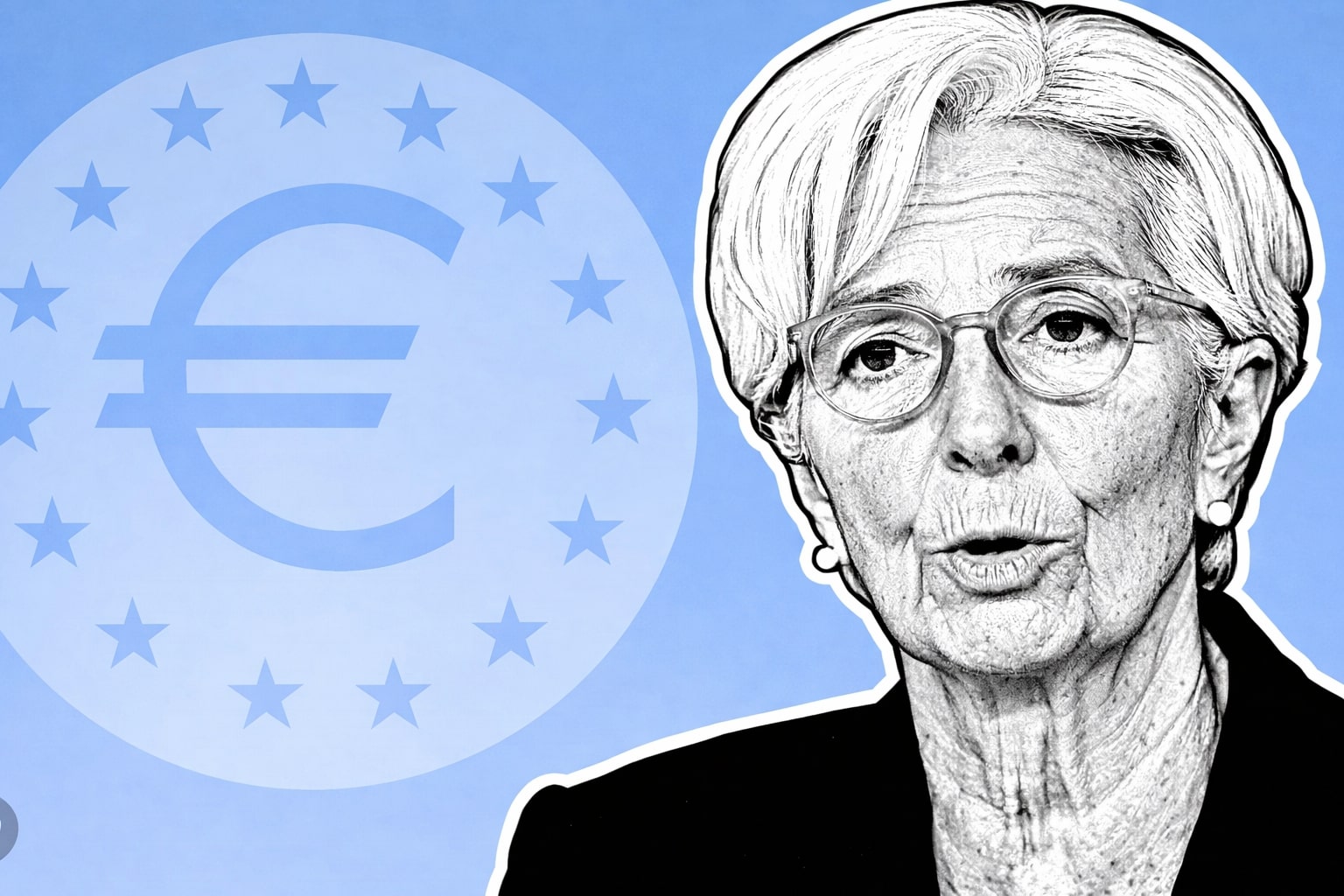
EUR/USD Under Fire: Tariffs, Fed Policy, and Technical Breakdown Pressure the Euro
Euro Drops Below 1.1600 as Trade and Inflation Collide | That's TradingNEWS
EUR/USD Slides Below 1.1600 as Trade War and Rate Divergence Hit Sentiment
The EUR/USD exchange rate has come under renewed selling pressure, slipping to 1.1586—its lowest point in weeks—as the greenback regained strength on the back of sticky U.S. inflation and Donald Trump’s sweeping new tariff threats. The euro’s bearish trajectory has intensified, with the 1.1600 psychological level now breached and eyes on the deeper support zone around 1.1530–1.1550. This region acted as a key demand base during the European session, but any break below this could expose 1.1470, followed by 1.1400. The sharp policy divergence between the Fed and the ECB remains central: while the U.S. Federal Reserve holds steady at 4.5%, the ECB lags behind at 2.15%, attracting yield-chasing capital toward dollar-denominated assets.
Tariffs, Trade Talks, and the Euro’s Sensitivity to U.S. Policy Moves
Trump’s escalating trade offensive—30% tariffs on EU imports starting August 1—has become a major bearish driver for the euro. The announcement rattled sentiment across European assets, as fears of retaliation from Brussels added to the uncertainty. While Trump denied intent to replace Fed Chair Powell, the political undertones have kept EUR/USD volatile. Eurozone officials remain engaged in urgent negotiations, with EU negotiator Maroš Šefčovič confirming that a deal is close but not yet finalized. The economic fallout could be significant, with German exports particularly vulnerable. If no agreement is reached, EU countermeasures on U.S. dairy and pharmaceuticals are set to begin simultaneously.
Technical Structure of EUR/USD Breaks Down, Eyes on 1.1460
From a technical standpoint, EUR/USD has shifted into a descending channel, with sellers in firm control. The MACD remains deeply negative, and RSI dropped to 46, showing early signs of oversold momentum building. Price is firmly capped by both the 50-day EMA (1.1644) and the 200-day EMA (1.1663), and every attempt to recover above 1.1600 has been quickly rejected. A sustained move below 1.1540 would dismantle the broader bullish structure that was active earlier this year and likely open downside toward 1.1460, a level not tested since March. Resistance is now stacked at 1.1612, 1.1641, and 1.1667.
Inflation, Retail Sales, and Fed Outlook Undermine the Euro
June’s U.S. CPI clocked in at 2.7% YoY, with Core CPI at 2.9%—both exceeding the Fed’s 2% target. These sticky inflation prints reinforce the Fed’s decision to remain on hold at 4.25%–4.50%. The U.S. Dollar Index (DXY) has bounced to 98.50, reflecting investor confidence in the dollar's yield advantage. The Fed’s Beige Book indicated moderate price pressures and stable conditions, while FOMC members like Lorie Logan and John Williams underscored that no rate cuts are imminent. With inflation stubbornly high and no easing in sight, EUR/USD continues to absorb selling pressure. Eurozone inflation, meanwhile, held steady at 2.0%, with core inflation flat at 2.3%, giving the ECB no fresh ammunition to tighten policy. Traders now await U.S. jobless claims, retail sales, and the Philly Fed index for direction.
Bullish Attempts Fade as Resistance at 1.1680 Caps Upside
Despite several rebound attempts, EUR/USD remains unable to break past 1.1680. The rejection from 1.1641 and the 1.1672–1.1685 resistance band has capped every bullish retracement. The recent bounce to 1.1604 during New York trading suggested short-term momentum, but the pattern remains dominated by lower highs and fading follow-through. Should a daily close occur beneath 1.1540, the path toward 1.1500 and 1.1460 opens wide. If bulls can reclaim 1.1641, however, the door could reopen toward 1.1720 and 1.1819—both of which are significant highs from earlier in the year.
ECB Policy Lags as Euro Struggles to Find Support
Unlike the Fed, the ECB has stayed on the sidelines, with no change expected at the upcoming meeting. While the euro has held medium-term support at 1.1479, the failure to breach 1.1735 in recent weeks has added weight to the bearish trend. ING Bank forecasts a slide toward 1.1500 by Q3’s end, especially if U.S. economic momentum continues and eurozone data stagnates.
Verdict: Bearish Below 1.1540, Cautious Rebound Above 1.1612—Bias Remains Short
The setup around EUR/USD continues to deteriorate. With inflation divergence, widening rate differentials, and Trump-era tariffs in play, the path of least resistance remains lower. As long as the euro trades below 1.1641 and fails to break the upper channel boundary, short setups dominate. A move below 1.1540 validates a bearish continuation toward 1.1460 and possibly 1.1400. Verdict: Bearish Bias—Sell EUR/USD on Rebounds Below 1.1641, Target 1.1460, Stop Above 1.1680.
That's TradingNEWS
Read More
-
UCO ETF Price Forecast: Can NYSEARCA:UCO at $18.57 Ride a 2026 Oil Squeeze?
18.12.2025 · TradingNEWS ArchiveStocks
-
XRPI at $10.50 and XRPR at $14.93 Hit XRP ETF Lows While XRP-USD Holds $1.84 After 30 Days of Inflows
18.12.2025 · TradingNEWS ArchiveCrypto
-
Natural Gas Price Forecast: Henry Hub Holds Around $4 as EIA Draw Hits 167 Bcf
18.12.2025 · TradingNEWS ArchiveCommodities
-
USD/JPY Price Forecast: Pair Holds Above 155 As BoJ And US CPI Set Up A Major Break
18.12.2025 · TradingNEWS ArchiveForex



















